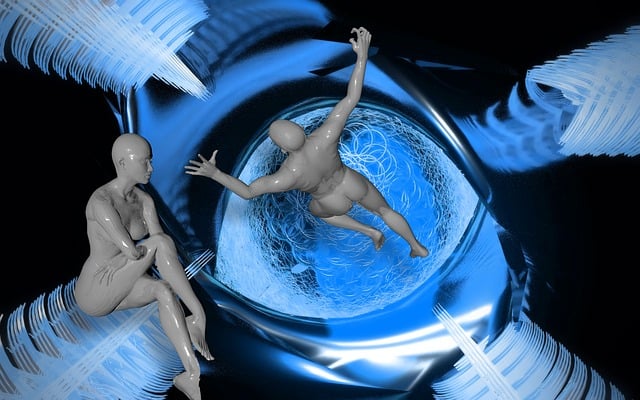Contrast therapy, involving alternating hot and cold treatments, has gained popularity among athletes as a powerful recovery tool. By modulating blood flow and inflammation, it reduces muscle soreness, expedites healing, and enhances performance. This ancient practice, supported by modern science, triggers beneficial physiological responses, making it an effective choice for post-workout routines and sports injury rehabilitation.
“Unleash your body’s potential with contrast therapy—a natural, science-backed approach to enhanced recovery. This ancient practice has gained modern popularity among athletes seeking an edge in performance. From understanding the fundamentals of contrast water therapy to exploring its scientific basis for muscle relief and injury rehabilitation, this article delves into the benefits of alternating heat and cold treatments. Discover how contrast baths accelerate recovery, offering a game-changer strategy for optimal athletic performance.”
Understanding Contrast Therapy: A Natural Approach to Recovery
Contrast therapy, an ancient practice rooted in natural healing, has gained significant attention from athletes and health professionals alike as a powerful tool for enhanced recovery. This therapeutic approach involves alternating between hot and cold treatments to stimulate various physiological responses in the body. By immersing oneself in contrast water therapy—whether it’s a dip in hot water followed by cold or using contrast baths—athletes can experience a range of benefits tailored to muscle recovery, injury prevention, and overall athletic performance improvement.
The science behind contrast therapy lies in its ability to manipulate blood flow and inflammation. Hot temperatures cause vasodilation, increasing blood flow to the affected area, which aids in removing metabolic waste and delivering oxygen-rich blood to promote healing. Conversely, cold temperatures induce vasoconstriction, reducing blood flow and minimizing swelling. This alternating pattern of heat and cold can help reduce muscle soreness, enhance flexibility, and speed up recovery time for athletes recovering from intense training sessions or sports injuries.
How Contrast Water Therapy Works for Athletes and Sports Recovery
Contrast water therapy involves alternating between hot and cold treatments, typically in the form of hot and cold baths or showers. This method has gained significant popularity among athletes and sports professionals as an effective recovery tool. The science behind it lies in the physiological response of the body to extreme temperatures.
When athletes immerse themselves in hot water, blood vessels dilate, increasing blood flow and delivering essential nutrients and oxygen to muscles. This promotes muscle relaxation and reduces post-exercise soreness. Conversely, cold water causes vasoconstriction, narrowing blood vessels and reducing inflammation. By alternating between these two extremes, the body stimulates a range of beneficial responses, including enhanced circulation, reduced muscle stiffness, and faster recovery from sports injuries. The benefits extend to improved performance, as athletes can return to training and competition sooner, with less risk of re-injury.
The Science Behind Heat and Cold Therapy for Muscle Relief and Injury Rehabilitation
Contrast therapy, involving alternating applications of heat and cold, has gained significant attention in the realm of athletic recovery and injury rehabilitation. This age-old practice is backed by scientific evidence that demonstrates its efficacy in reducing muscle soreness and accelerating healing processes. When athletes or individuals suffering from sports injuries undergo contrast therapy, they engage in a dynamic process that mimics the body’s natural response to exercise and trauma.
Hot and cold therapy plays a pivotal role in modulating inflammation, which is crucial for both immediate pain relief and long-term recovery. Heat increases blood flow, aiding in the transport of oxygen and nutrients to injured tissues, while promoting relaxation of muscles. Conversely, cold therapy constricts blood vessels, reducing swelling and inflammation, providing temporary pain relief and minimizing further tissue damage. Combining these two modalities through contrast baths or alternating treatments can enhance overall muscle recovery, making it a popular choice among athletes seeking to optimize performance and speed up rehabilitation after intense workouts or injuries.
Benefits of Contrast Baths: Accelerating Recovery for Peak Performance
Contrast baths have emerged as a powerful tool in the realm of athletic recovery, offering athletes a natural and effective way to accelerate their return to peak performance. This therapy involves alternating between hot and cold water, stimulating the body’s circulation and promoting healing. The benefits are numerous; for athletes recovering from intense training sessions or sports injuries, contrast baths can reduce muscle soreness, decrease inflammation, and enhance overall blood flow, ensuring faster and more efficient recovery.
By exposing the body to extreme temperature changes, contrast therapy triggers a physiological response that boosts the release of endorphins and norepinephrine, natural chemicals known for their pain-relieving and energy-boosting properties. This process not only aids in muscle recovery but also improves mental focus and reduces stress, which is particularly advantageous for athletes aiming to maintain peak performance during competitive seasons. Incorporating contrast water therapy into post-workout routines has shown promising results in studies, making it a game-changer for sports recovery methods.
Contrast therapy, employing alternating hot and cold exposure, emerges as a powerful tool for athletes seeking accelerated recovery. The science behind this natural approach reveals its efficacy in alleviating muscle soreness, reducing inflammation, and enhancing circulation. By integrating contrast water therapy into their routines, athletes can optimize performance through efficient injury rehabilitation and improved overall recovery. This method’s simplicity and benefits make it an appealing choice for those striving for peak physical condition.
